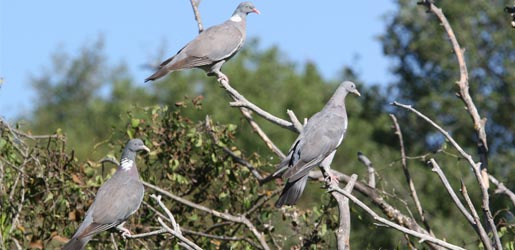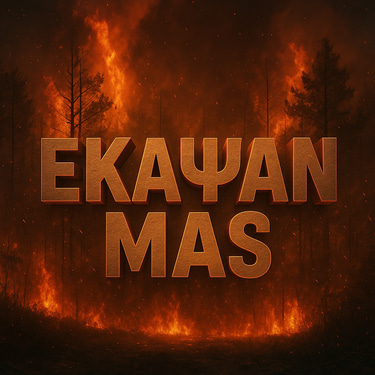Limassol MOUNTAIN FIRES 2025
LEARN about the villages evacuated, the total destruction of over 120km², the dead, the injured, the lives lost and the stories of survival and solidarity. photos, videos and volunteers from the fire front!
🔥 Impacts and Species Rescue Proposals – Limassol Mountain Fires 2025
🔥 The 2025 fires in the Limassol Mountains destroyed critical habitats, leaving thousands of animals without food, water and shelter. Immediate rescue actions — waterers, feeders, community nurseries and organized restoration plans — are needed to save the remaining species and re-establish biodiversity.
✍️ Team fothkia.com
8/17/20253 min read


🔥 The 2025 fires in the Limassol Mountains were one of the greatest ecological tragedies in Cyprus, as they burned down extensive habitats that were home to rare species of fauna and microfauna. Thousands of animals were suddenly left without a source of food, water and natural protection, while many were burned alive or suffered fatal burns and smoke asphyxiation. The destruction of vegetation interrupted the food chain, leading to a sharp decline in pollinators (bees, butterflies), insects and small mammals, which directly affected the agriculture of the region.
To save the remaining species, immediate and targeted interventions are required: installation of waterers and feeders in burned areas, creation of community nurseries with native plants that will provide shelter and food again, organization of monitoring and rescue networks for injured animals, as well as a long-term plan for the restoration of ecosystems through European funds (LIFE & CAP). Only with the cooperation of citizens, communities, scientists and the state can it be ensured that the biodiversity of the Limassol Mountains will regain life and balance.
1. Birds
Griffon Vulture (Gyps fulvus) Impacts:
• Foraging areas lost.
• Reduced availability of carcasses (fewer sheep and goats/wild game).
• Risk of local extinction if adults die.
What can be done:
✅ Creation and maintenance of “vulture feeders” with controlled supply of dead animals.
✅ Continuous GPS monitoring to detect movements/needs.
✅ Education of communities not to use poisons.
Eagle (Aquila fasciata)
Impacts:
• Lost nests on rocks.
• Reduction of prey (hares, partridges).
What can be done:
✅ Protection of rocky areas from new disturbances.
✅ Enhancement of prey wealth with artificial releases of partridges in selected areas.
✅ Installation of nesting platforms.
Serpent eagle (Circaetus gallicus)
Impacts:
• Reduction in reptile population.
What can be done:
✅ Creation of "green islands" with artificial planting and watering cans to increase reptile populations again.
✅ Avoiding the use of pesticides that reduce reptiles.
Cyprus Warbler (Sylvia melanothorax)
Impacts:
• Destruction of shrubs → loss of habitats.
What can be done:
✅ Controlled reforestation with Cypriot aromatic plants (astoibides, ladanias).
✅ Grazing ban in Natura zones for at least 10 years.
Cyprus Wheatear (Oenanthe cypriaca)
Impacts:
• Lack of insects for food.
What can be done:
✅ Creation of artificial nesting sites (nest boxes).
✅ Preservation of small "green islands" with natural vegetation to attract insects.
2. Mammals
Hare (Lepus europaeus cyprius)
Impacts:
Mass mortality.
Lack of cover from predators.
What can be done:
✅ Protection from uncontrolled hunting for at least 5 years.
✅ Enrichment with individuals from unaffected areas.
Cyprus fox (Vulpes vulpes indutus)
Impacts:
• Lack of food and nests.
What can be done:
✅ Creation of water supply points and periodic feeding.
✅ Prohibition of poisoned baits.
Bats
Impacts:
• Tree cavities lost.
• Insect populations reduced.
What can be done:
✅ Installation of artificial nest boxes (bat boxes).
✅ Restoration of springs/reservoirs with access to water.
3. Reptiles & Amphibians
Cyprus Laphiate (Hierophis cypriensis)
Impacts:
• Mass mortality from fire.
What can be done:
✅ Protection of "population cores" in unburned zones.
✅ Creation of small stone shelters in burned areas.
Green lizard (Lacerta troodica)
Impacts:
• Loss of vegetation = loss of habitat.
What can be done:
✅ Planting shrubs/low plants that provide shelter.
✅ Limit grazing to avoid losing new vegetation.
Frogs (Pelophylax cypriensis)
Impacts:
• Streams dried up, water temperature increased.
What can be done:
✅ Artificial preservation of wet spots (water tanks).
✅ Restoration of shade by planting trees along streams.
4. Microfauna
Bees
Impacts:
Thousands of hives burned.
Reduced pollination.
What can be done:
✅ Creation of "beekeeping zones" with new hives.
✅ Sowing of melliferous plants (thyme, olive tree, asphaka).
Butterflies (e.g. Hipparchia cypriensis)
Impacts:
• Extinction of host plants.
What can be done:
✅ Targeted reforestation with plants that host caterpillars.
✅ Creation of small "butterfly gardens" near communities.
Beetles
Impacts:
• Population destruction, interruption of nutrient recycling.
What can be done:
✅ We leave pieces of burnt wood on the ground for woodworm reproduction.
Ants
Impacts:
• Colony disappearance.
What can be done:
✅ Avoid new chemical spraying; natural colonies will reestablish.
Snails
Impacts:
• Total losses on burned slopes.
What can be done:
✅ Small "islands of moisture" (streams, stones) for new colony.
✅ Collection/reintroduction from unaffected areas.
Earthworms
Effects:
• Mass death in the upper soil layers.
What can be done:
✅ Enrich soil with organic matter (compost).
✅ Limit heavy cultivation until fertility is restored.
5. Horizontal Actions (for all species)
Creation of drinking water stations in burned areas.
Strict hunting ban for 3–5 years.
Voluntary monitoring networks to record new species/survival.
Environmental education of residents to avoid further disasters.
Use of European LIFE/Natura 2000 funds for long-term restoration.
We cannot remain silent. We cannot wait for another tragedy.
The time for action is NOW:
✅ Install waterers and feeders for the remaining animals.
✅ Create community nurseries with native plants to rebuild the natural environment.
✅ Organize voluntary networks for the rescue and monitoring of fauna.
✅ Immediately utilize European LIFE and CAP funds for biodiversity restoration.
✅ Establish a long-term plan for the prevention and protection of wildlife.
👉 We call on citizens, communities, municipalities and the government itself to take responsibility. The fauna of the Limassol Mountains cannot wait.
🌱 Every day that passes without action, more lives are lost.
Who We Are
fothkia.com is an independent group of citizens and volunteers created after the 2025 fires in the Limassol Mountains. Our goal is prevention, protection and justice for the people, animals and environment of Cyprus. We do not represent parties or interests; we are ordinary citizens who refuse to remain silent.
Disclaimer
The content of the website is informative and awareness-raising, based on public sources, testimonies and personal opinions. It does not constitute an official position of state or legal entities. The management is not responsible for any errors or misinterpretations, while each report is made in good faith within the framework of freedom of expression. If anyone believes that they are being offended, they can contact us for clarification.
© 2025. All rights reserved.
